Published Mar 29, 2023
The (In)fallible Janeway
'Come on, Kate, make something great out of that mess.'
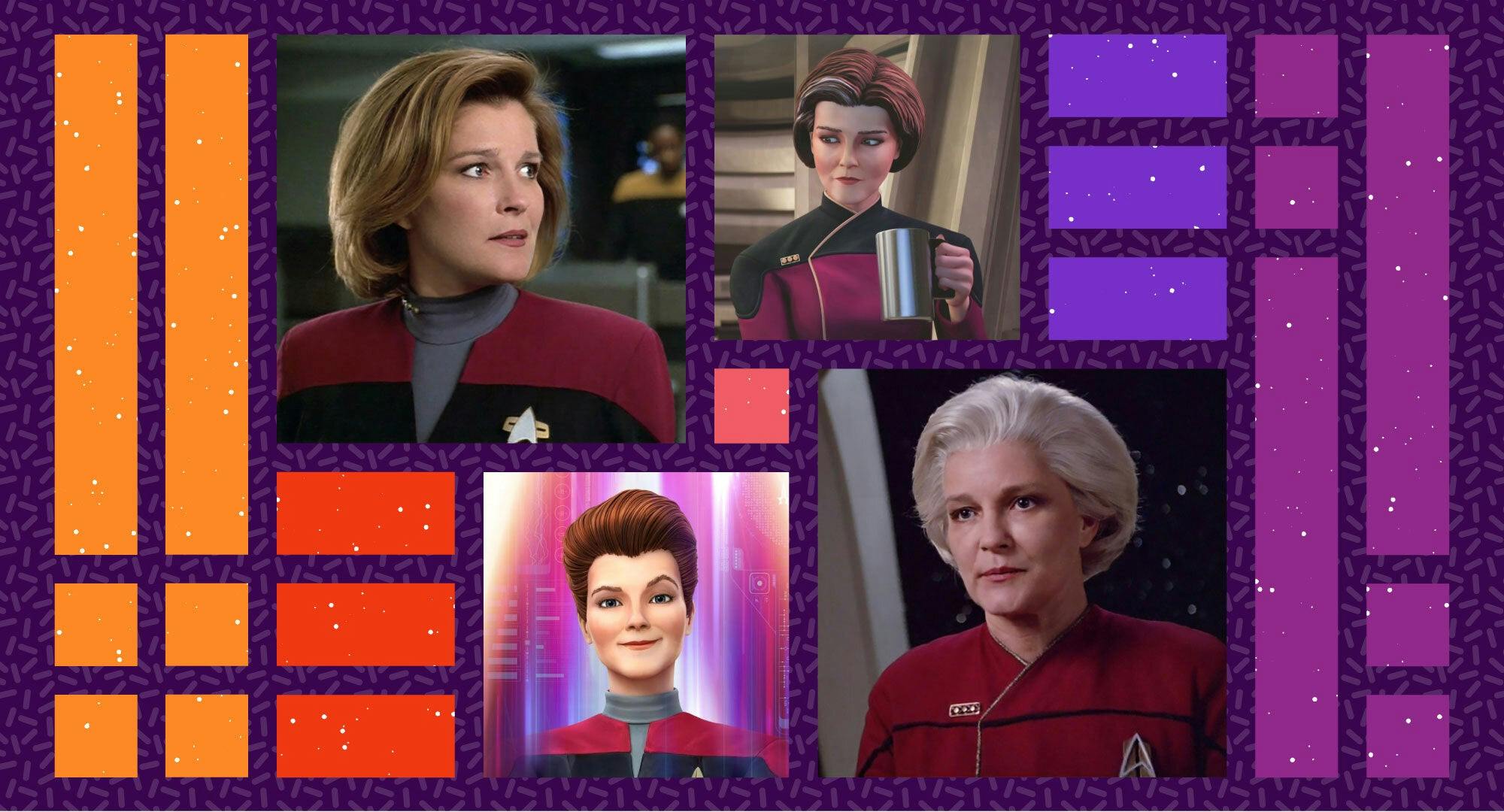
StarTrek.com
One thing I learned watching Janeway growing up is
how leadership means being responsible
for working through dilemmas [with] no clear answers.
All the easy decisions are made
before it gets to the top.
Alexandria Ocasio-Cortez, November 4, 2022
"What would the real Janeway do?," asks Hologram Janeway in the sixth episode of , "Terror Firma."
With this line, the Emergency Training Hologram aboard the U.S.S Protostar underscores that while she may look and sound like Captain Janeway as we remember her from seven seasons of , she is her own entity. And, while Hologram Janeway may look to the "real Janeway" for inspiration, she has come into her own as a hero by the time the first season of Prodigy has concluded.
Captain/Admiral Janeway
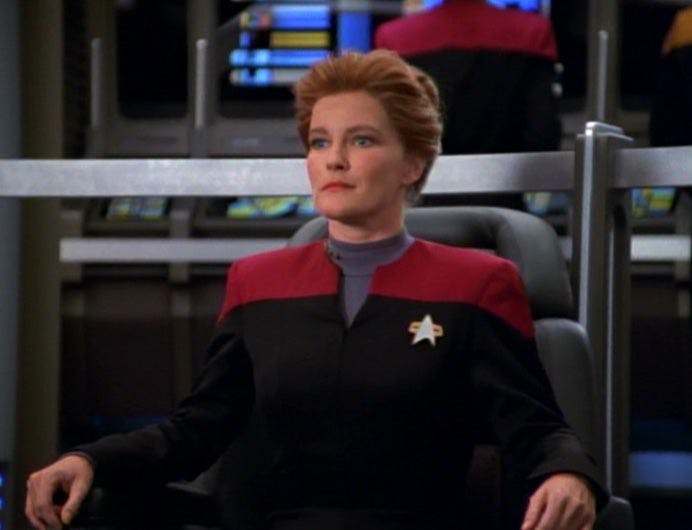
"Caretaker"
StarTrek.com
Although certainly not the first time we'd seen a woman in the captain's seat in Star Trek, when Voyager first made its debut in 1994, it was the first time a woman served as the lead character of a Star Trek series. While the Earth society under the Federation in the 24th Century may have eradicated sexism, Earth society in the 20th and 21st Centuries still shows plenty of "room for growth." As such, it was inevitable that Janeway would face inherent skepticism from certain groups of the audience.
This meant that, especially in the series' earliest episodes, Captain Kathryn Janeway had to be "The Infallible Janeway" — and according to Voyager's first season show bible, although she was by no means the only woman captain in Starfleet, "it is generally acknowledged that she is among the best — male or female." Because of this, even making a decision considered by some as controversial could result in an outsized amount of attention. For example, we can look to the Voyager Season 2 episode "," a 1996 episode that continues to be so heavily discussed that even U.S. Representative Alexandria Ocasio-Cortez joined a conversation about it on Twitter in 2020 (in contrast, there's little discussion about the death of Trip Tucker's clone in the episode "").
But, over the course of Voyager, Janeway won over the hearts of even the most skeptical audience members. In fact, by the time arrived on the big screen in 2002, Janeway had grown so popular that the character received a cameo appearance in the movie. This was true, in 2001 when the Voyager series finale, " ," was also released — Janeway had reached a point where she could make more controversial decisions.

"Endgame"
StarTrek.com
In "Endgame," this means violating the Temporal Prime Directive to ensure that Voyager would reach Earth much more quickly than it might have otherwise. Traveling back in time over two decades from a parallel 2404, the future Admiral Janeway not only guided her younger self and crew through a path that cut 17 years off their travel time, but also brought technology developed at a high cost in that timeline, including advanced ablative ship armor and transphasic torpedoes.
However, in traveling back to offer this guidance, Admiral Janeway sacrifices her life and eradicates the future timeline from which she originated. While the Admiral can easily justify this thanks to the deaths of Seven of Nine, Tuvok, and Chakotay, the timeline wasn't bad for everyone on the Voyager crew. For one thing, this is the only canon timeline where Captain Harry Kim is given the promotion he's always deserved. And for another, The Doctor — who, after more than 30 years, has chosen the name "Joe" — is happily married to a human and seems to enjoy not only practical benefits like those granted by the long-lost mobile emitter, but also increasing societal respect for holographic sentience. And finally, consider Professor Reggie, the apotheosis of a character who had a very long road getting from 's "" to here — and it's a future in which he seems well adjusted and happy.
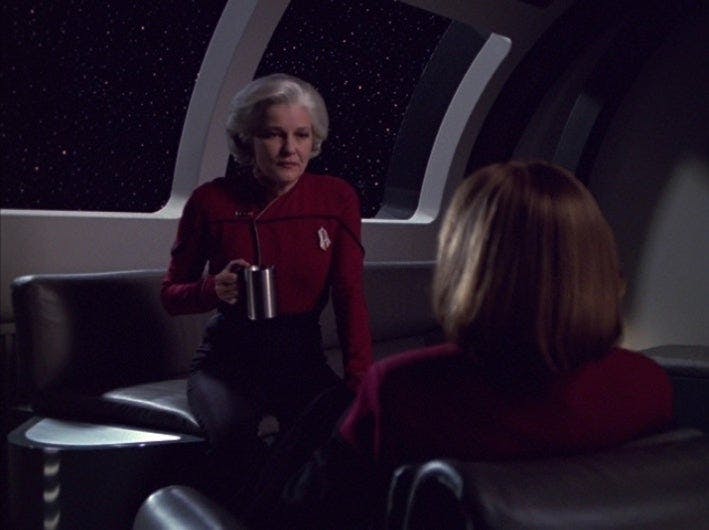
"Endgame"
StarTrek.com
"The sharp edges of loneliness were very much in play for Janeway [generally]," Mulgrew said in the July 2002 issue of Star Trek Monthly. "And that made the ultimate sacrifice that much more delicious. The Admiral sacrificed her life so that the Captain could persevere. That's who I really was as Janeway."
"Endgame" not only saves Janeway from her own loneliness, but her decision to change the timeline also affords survival for Seven, Chakotay, and Tuvok, demonstrating how allowing the woman captain to make a controversial decision can have lasting and unpredictable effects. Without Admiral Janeway's decision to violate the Temporal Prime Directive, Seven would not be involved in the ongoing events of , a role that has proven integral to the survival of the eponymous character more than once, and the Season 3 premiere, "Grounded," could not have featured Tuvok in his integral role where he gathered exonerating evidence for Captain Carol Freeman's highly publicized trial (you probably heard about this; they talked about it on FNN nonstop for a minute). And, of course, Chakotay's survival ensures he's alive to get lost in a parallel future timeline himself, spurring Vice Admiral Janeway's involvement in Prodigy and eventually leading to her involvement with the Protostar crew.
Hologram Janeway
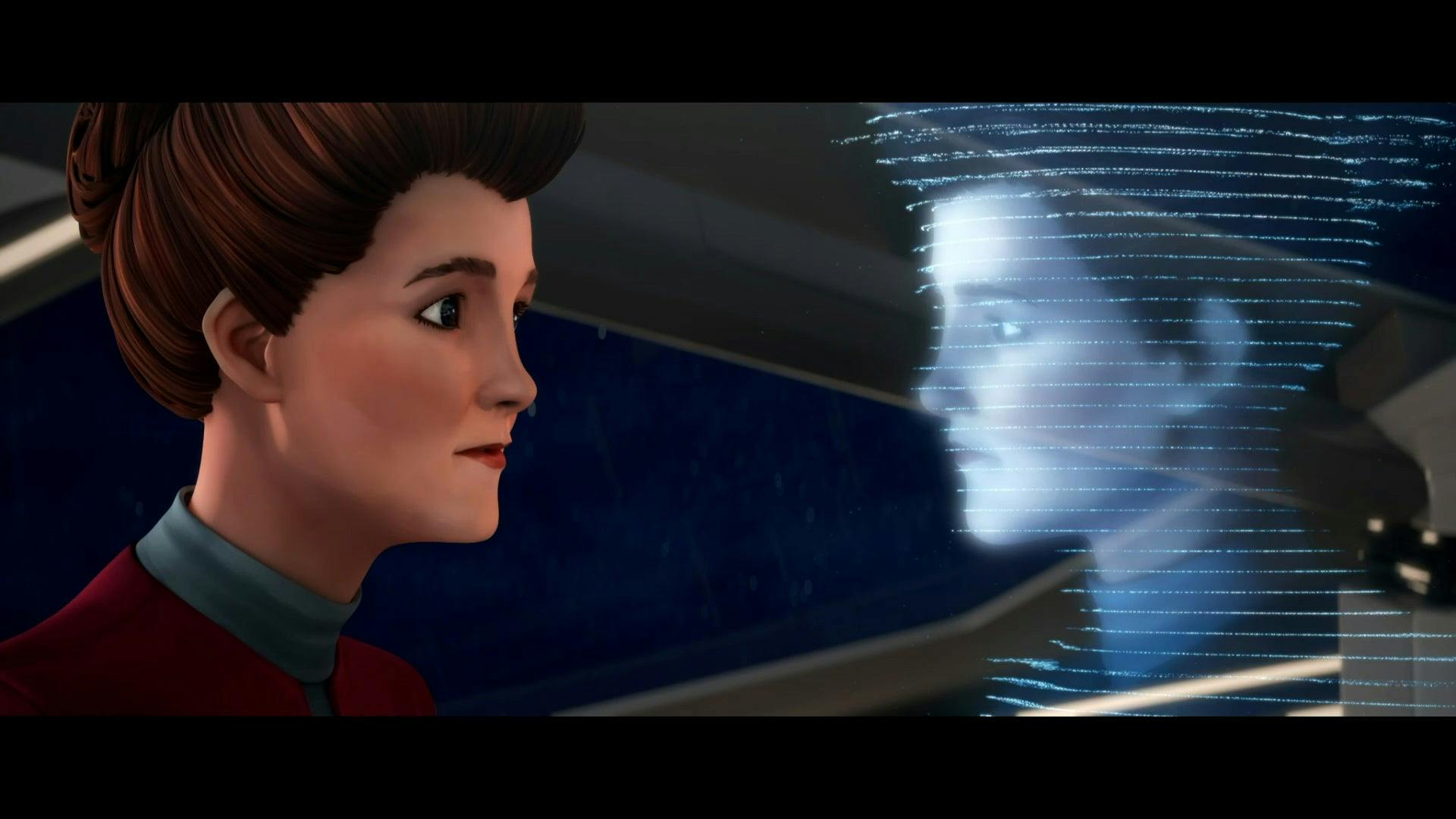
"Kobayashi"
StarTrek.com
When we are first introduced to Hologram Janeway in "Starstruck," she's more or less an echo of the "real Janeway" as we might best remember her from Voyager; she's even wearing a similar style of uniform (albeit without her captain's pips). She even possesses the same personal preferences as this remembered version of Janeway, including her affinity for coffee and gothic Bildungsroman holonovels (as demonstrated by program Janeway Lambda one, first seen in Voyagers' "," and through Jane Eyre in Prodigy's "Kobayashi").
Furthermore, Hologram Janeway can draw on many of Janeway's memories, including those that proceeded the events of Voyager, and can even offer Dal guidance through a historical nonfiction parable from Earth — the true story of Apollo 13 ("Time Amok"). Her presence as the ship’s Emergency Training Hologram demonstrates that the advancements brought back to Earth from the Delta Quadrant by Voyager weren't limited to the parallel future tech furbished by Admiral Janeway. This sophisticated recreation of the "real Captain Janeway" is likely only possible thanks to the tech advancements achieved by The Doctor during his tenure on Voyager.
But, when we are introduced to Hologram Janeway, while she may appear to have the experiences of the "real Janeway," it's worth noting that she’s as old as the recently christened (but subsequently time-traveled) Protostar, and during the span of her existence, her programming has been corrupted by the machinations of The Order (although we don’t know that until the final quarter of the first season).

"Supernova, Part 1"
StarTrek.com
Nevertheless, Hologram Janeway experiences significant growth thanks to her time with Captain Dal R’El, Gwyn, Rok-Tahk, Jankom Pog, Zero, and Murf. At the midpoint of Prodigy’s first season, she has become so integrated into the crew that she even shifts her appearance from the Voyager-era uniforms to better match the style the Protostar’s current crew wears – an affectation she hadn’t initiated under the command of Captain Chakotay. In “A Moral Star, Part 2,” it is revealed that Hologram Janeway’s programming was even upgraded by Gwyn, allowing her to both deceive The Diviner and Dreadnok in “A Moral Star, Part 1” and physically interact with non-holograms (allowing her to be embraced by Dal in “Asylum,” which she describes as “a new experience”).
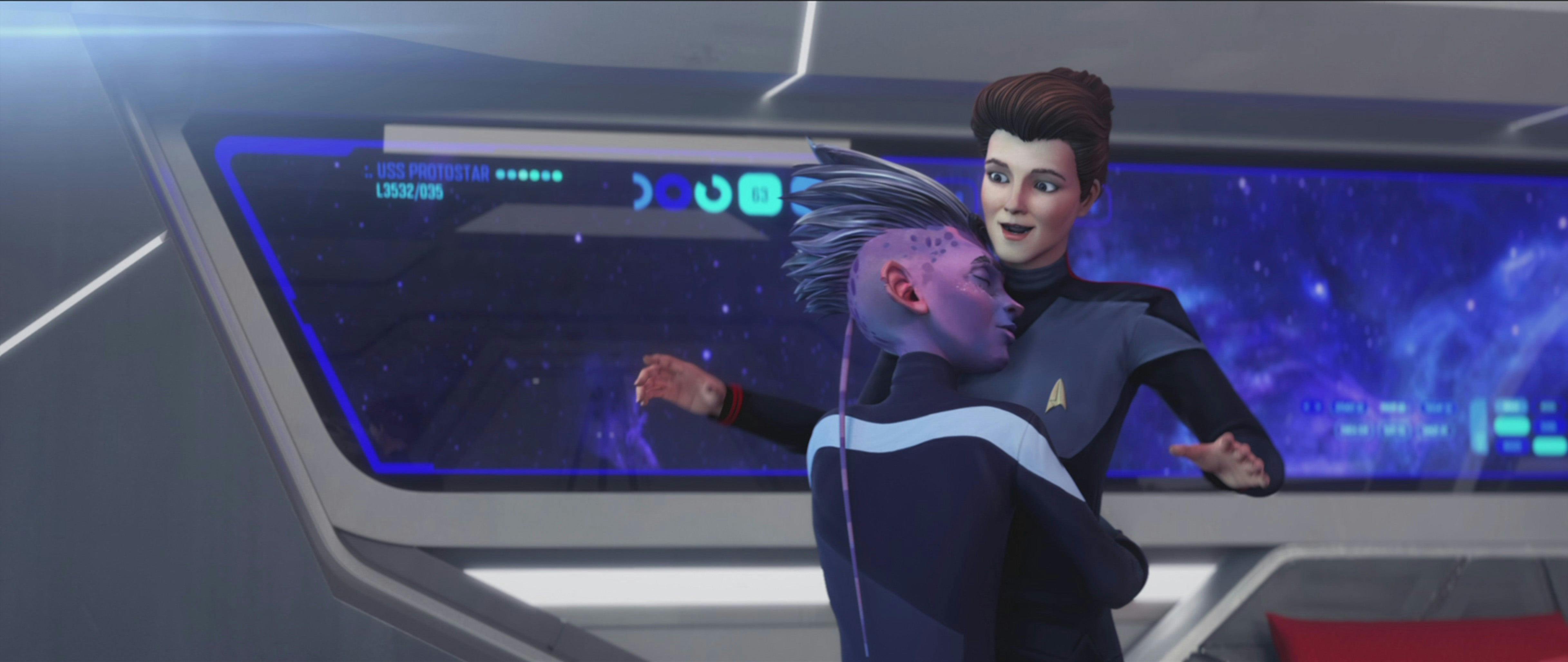
"Asylum"
StarTrek.com
Over the first 16 episodes of Prodigy, Hologram Janeway is an impeccable ally to the Protostar crew. She grows alongside them, her programming becoming too complex to be loaded onto an isolinear chip. But, throughout the tenure of their relationship with her, Hologram Janeway reminds the crew that she is a different character than the "real Janeway," a fact that becomes especially clear over the course of the back half of Prodigy's first season, as Vice Admiral Janeway undertakes a hunt for Chakotay and the Protostar.
We know from "Endgame" how far Janeway will go to rescue Chakotay. As expressed in
"Crossroads," even Hologram Janeway doubts the Protostar can stay ahead of the incredibly persistent clutches of the Vice Admiral.
Vice Admiral Janeway
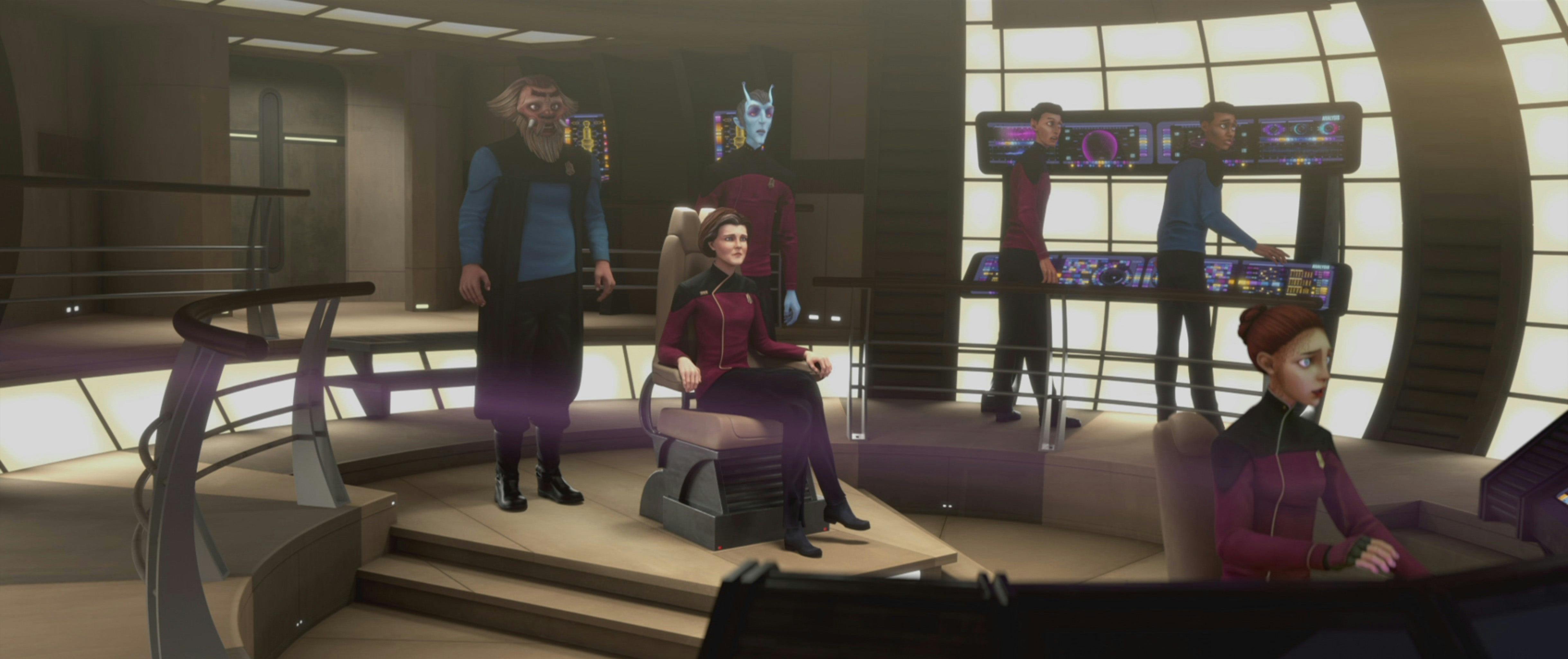
"Let Sleeping Borg Lie"
StarTrek.com
But, when the "real Janeway" does appear in the back half of Prodigy Season 1, she isn't exactly there to provide a good example to the Protostar crew. Instead, she's there to apprehend them!
Whereas "Hologram Janeway has to follow a certain structure," Mulgrew said in an interview, "Vice Admiral Janeway gets to play the Stradivarius." Although Vice Admiral Janeway isn't exactly a villain, running "the gamut of emotions" and "the gamut of command" in doing the job that Starfleet assigned her — the Hageman brothers compare her narrative function to the part Tommy Lee Jones plays in The Fugitive — it's hard to argue that she isn't playing something of an antagonistic role to our young protagonists aboard the Protostar crew.
Some impressive institutional Starfleet power further backs the real Janeway. Both the ship and the Bridge crew she commands underscore this — the Dauntless, based on scientific developments brought back to the Alpha Quadrant aboard Voyager. And, while the Protostar crew may be comprised of inexperienced outsiders, Janeway is backed by a team whose pedigree is underscored by the all-star team of actors who portray them — Daveed Diggs as Commander Tysess, Jameela Jamil as "Ensign Ascencia," and Voyager alum Jason Alexander as Dr. Noum.
At first, Vice Admiral Janeway assumes the Protostar crew is in cahoots with whoever abducted Chakotay. This initial (and erroneous) assumption is obviously augmented by . While this influence is not unprecedented — Chakotay's untimely death is part of the reason the parallel-timeline Janeway elected to violate the Temporal Prime Directive in "Endgame," after all — the extended duration over which Janeway believes the Protostar crew to be antagonist shows the type of imperfect narrative that Captain Janeway was rarely permitted to explore during Voyager's seven seasons on-air.
With Hologram Janeway filling the role of "perfect role model," the real Janeway is free to expand beyond the confines of a "STEM Barbie" archetype and become a more complicated, nuanced, and imperfect character. Through this, Prodigy can bring us the most human version of our beloved Janeway yet.
A Tale of Two Janeways
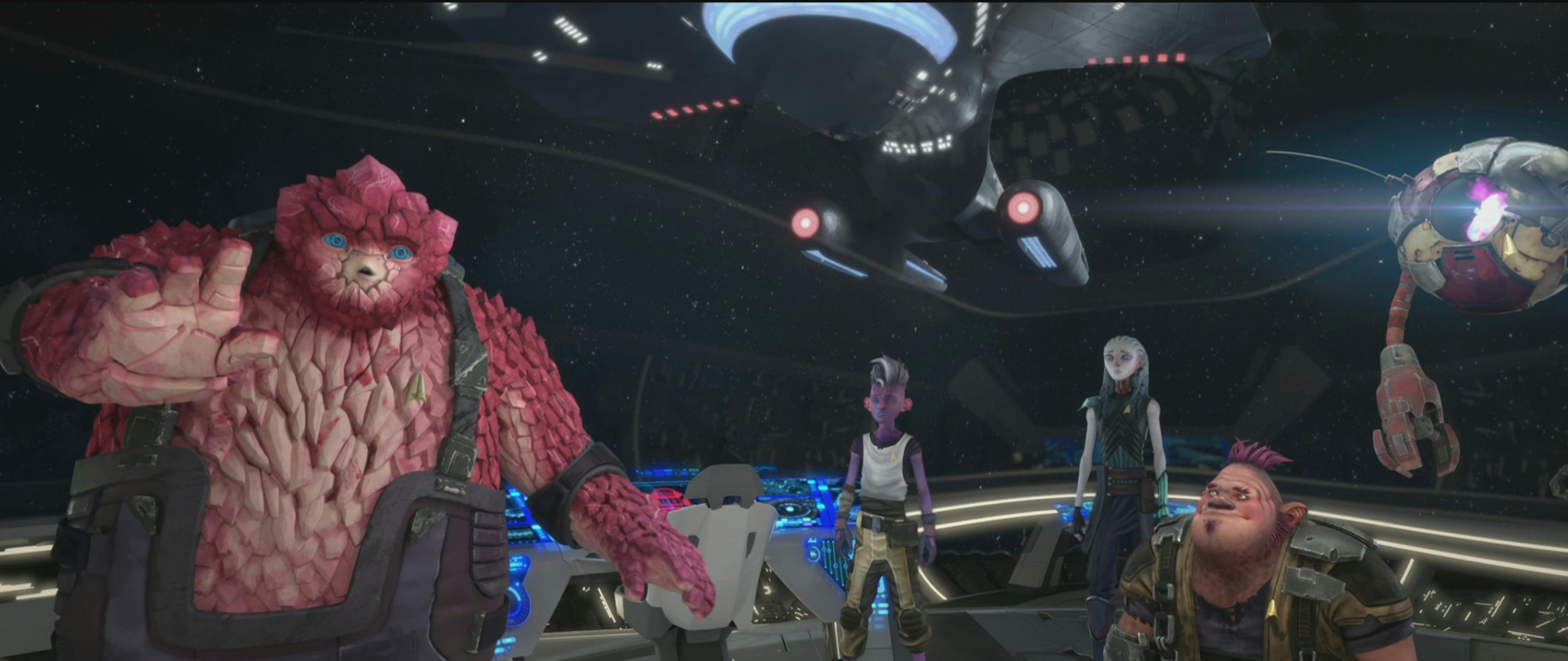
"Mindwalk"
StarTrek.com
After examining the bounties that Tysess proffers her in "Preludes," Vice Admiral Janeway has begun re-evaluating her perspective on the Protostar crew. Thanks to the additional information (and her boundless empathy), the real Janeway soon begins to suspect that there's more to the stolen Protostar situation than meets the eye.
These suspicions are confirmed thanks to her swapping minds with Protostar Captain Dal R’El during the events of "Mindwalk." This allows her to meet the rest of the crew — including the idealized version of herself, Hologram Janeway.
This ostensibly impeccable role model has been corrupted by clandestine programming, implanted by the Order as part of the future Vau N'Akat's machinations against Starfleet. In a sense, this makes the Hologram analogous to the '90s incarnation of Janeway, who was obligated to provide a façade of perfection to gain acceptance.
However, while Hologram Janeway may be a "perfect" version of the legendary Starfleet leader, it takes the real (and imperfect) Janeway to help reconnect her with her true mission. Because the ETH is classified as a "non-essential system" in the ship’s computer, Vice Admiral Janeway can purge the corrosive programming. This allows Hologram Janeway to once again assume the position for which she had been designed — a role model for the up-and-coming crew of the Protostar.
Endgame
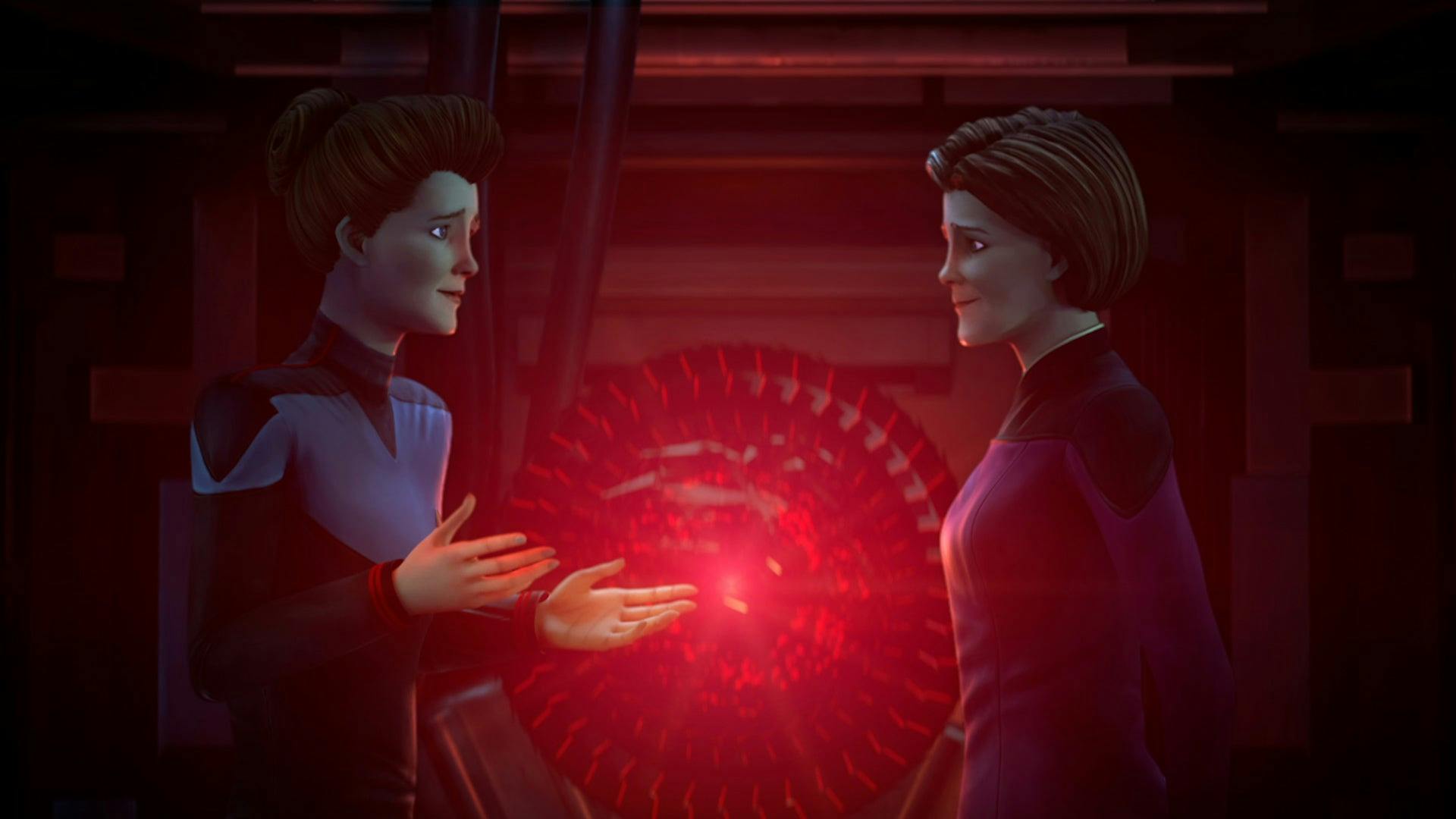
"Mindwalk"
StarTrek.com
When Vice Admiral Janeway has returned to her actual body aboard the Dauntless, she finds that Dal's actions while occupying her mind have confined her to the Brig just as the Living Construct is about to activate and set The Order's plan into motion. It's a real mess. Fortunately, Vice Admiral Janeway used her father's words ("Come on, Kate, make something great out of that mess.") to help provide Hologram Janeway guidance in the previous episode, reminding both Janeways that there's power in taking a mess and making something great.
While Hologram Janeway may have represented an "idealized" Janeway, it is only through the actions of the imperfect "real Janeway" that she can purge her corrosive programming and play her integral role in the climax of "Supernova, Part 2."

